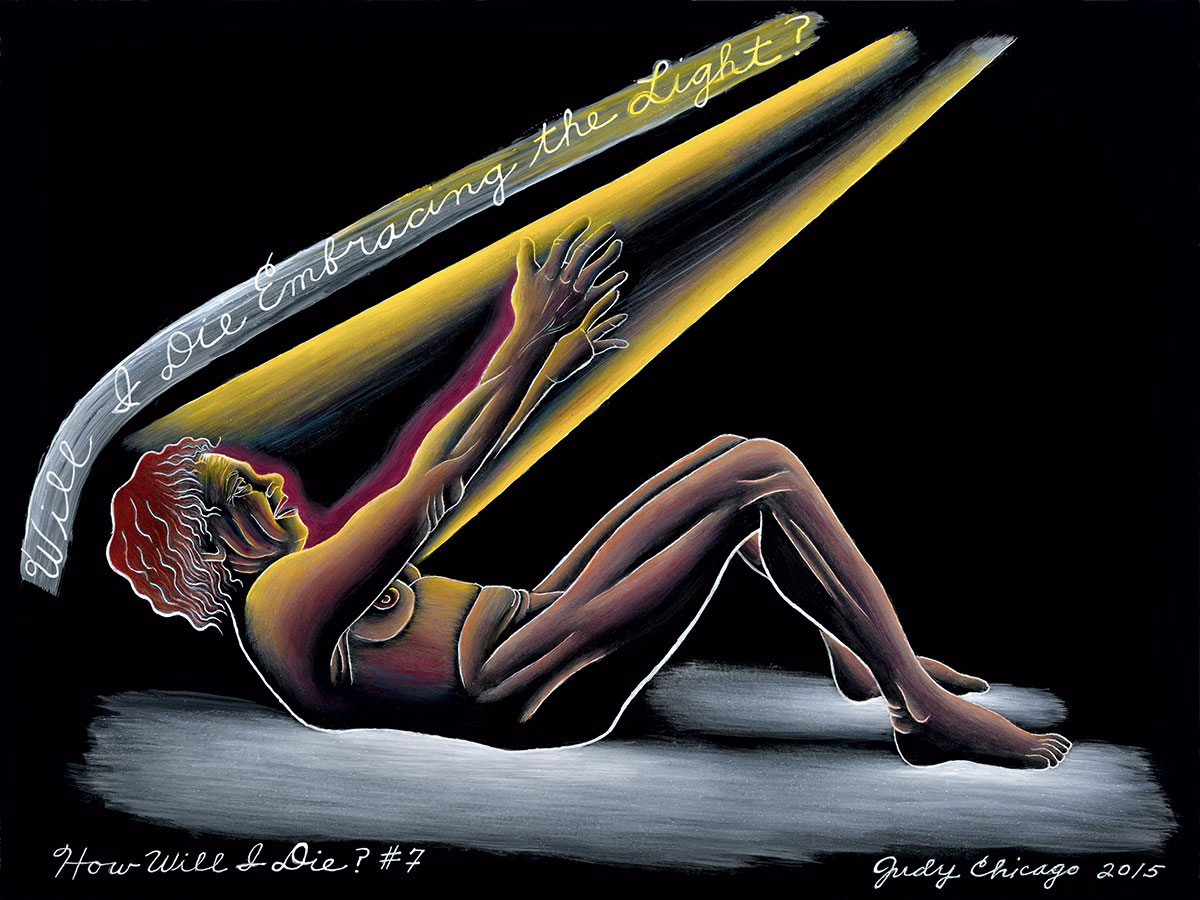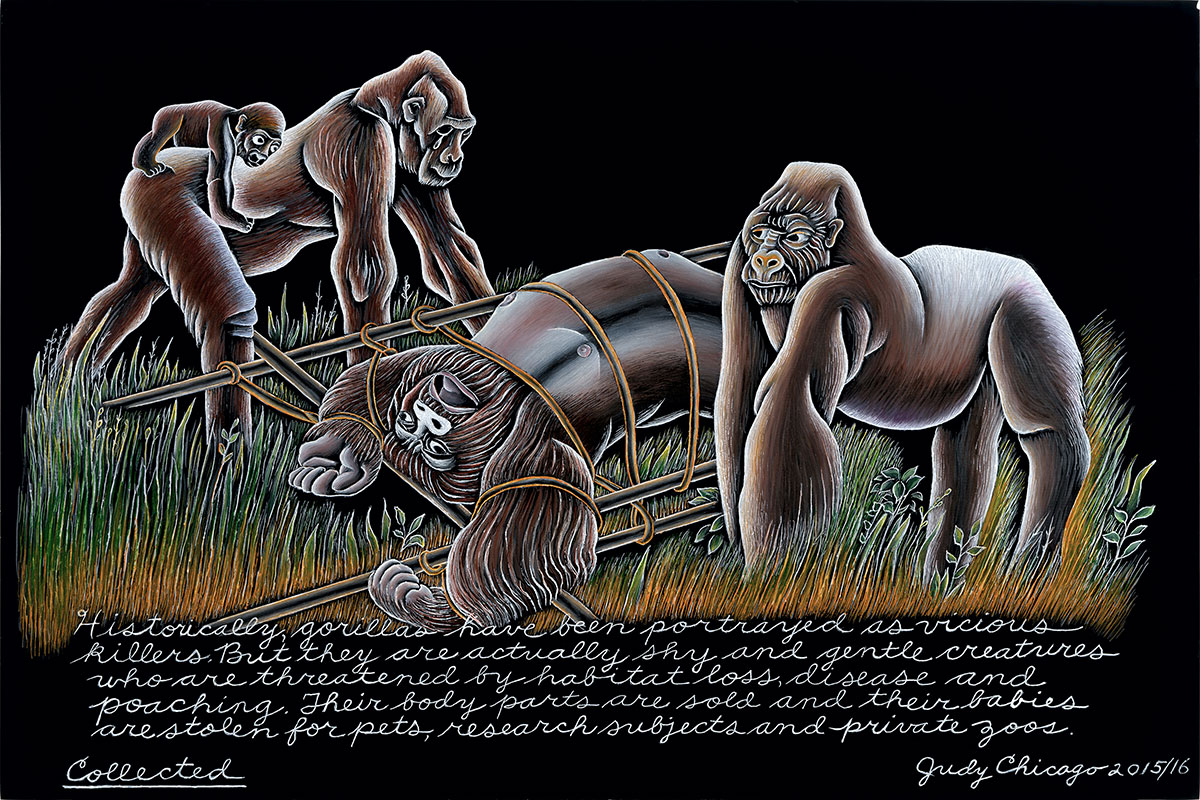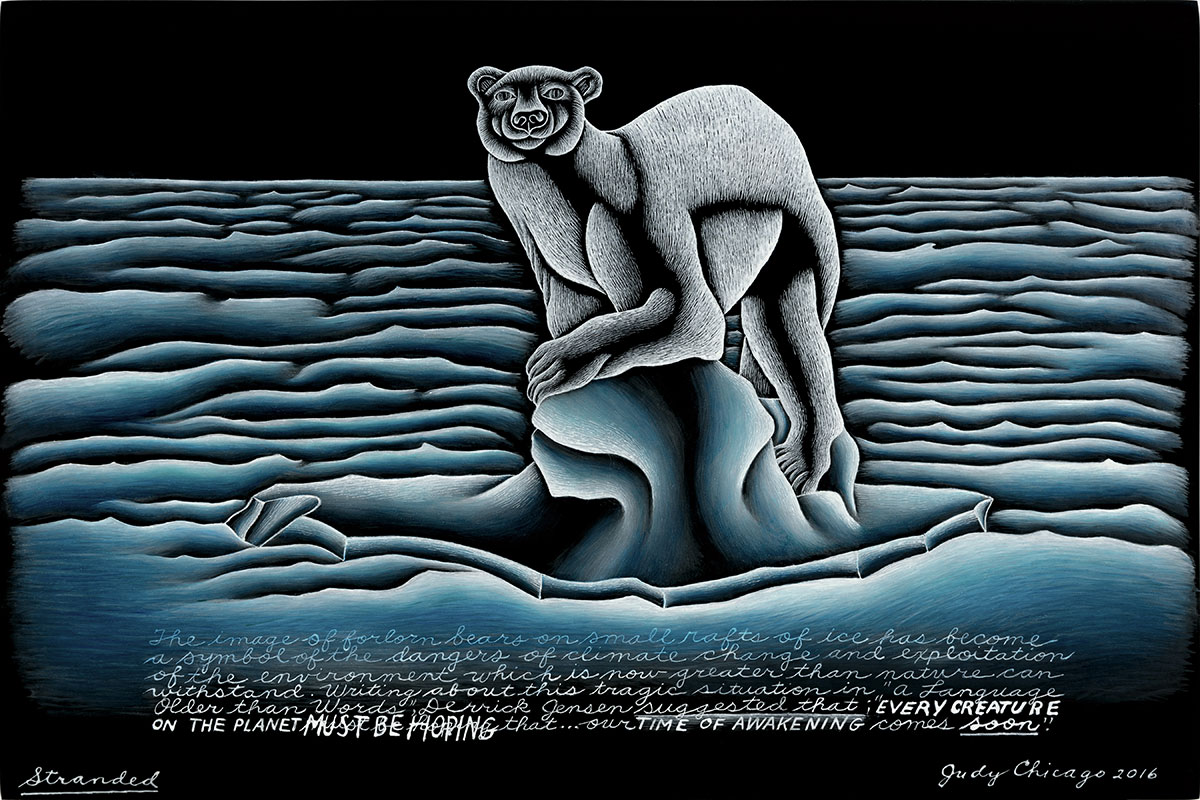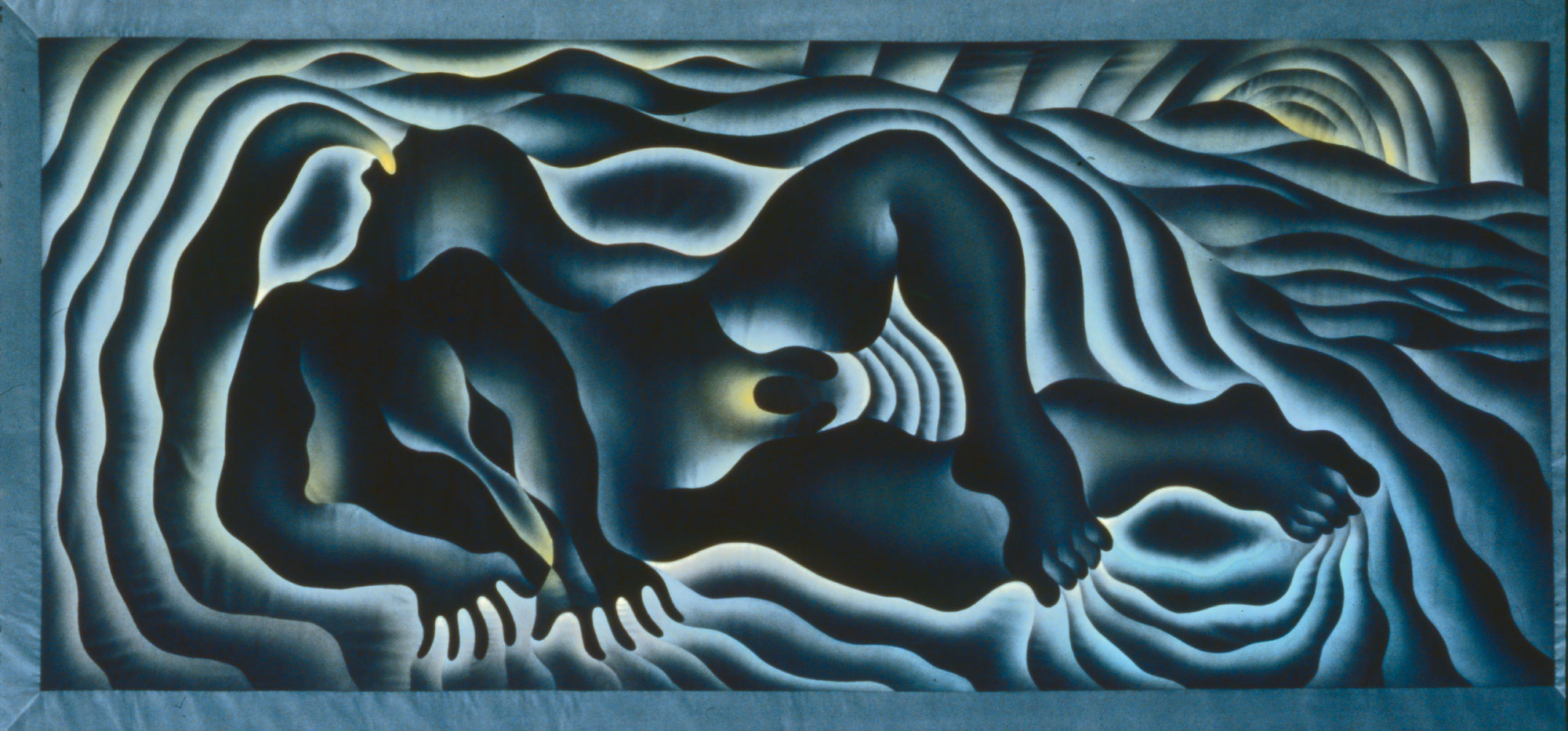PRESENTATION: Judy Chicago-A Retrospective
 Judy Chicago is an artist, author, feminist and educator whose career spans five decades, she is one of the pioneers of Feminist art that emerged in the late 1960s amidst the fervor of anti-war demonstrations and civil and queer rights movements. Her complex and focused installations created some of the visual context of the women’s liberation movement in the 1970s and beyond.
Judy Chicago is an artist, author, feminist and educator whose career spans five decades, she is one of the pioneers of Feminist art that emerged in the late 1960s amidst the fervor of anti-war demonstrations and civil and queer rights movements. Her complex and focused installations created some of the visual context of the women’s liberation movement in the 1970s and beyond.
By Dimitris Lempesis
Photo de Young museum Archive
Spanning from Judy Chicago’s early engagement with the Californian Light and Space Movement in the 1960s to her most current body of work (a searing investigation of mortality and environmental devastation) Chicago in her first retrospective of her work presents almost 130 paintings, drawings, ceramic sculptures, and prints, as well as ephemera, several films, and a documentary that chart the boundary-pushing path of the artist. “Judy Chicago: A Retrospective” is presented on the heels of the 100th anniversary of women’s right to vote across the United States. One of the founding forces behind the 1970s feminist art movement, Chicago became widely known for her landmark installation “The Dinner Party”. The massive work shone a spotlight on women’s contributions to history. It featured table settings that honored ancient female deities such as Ishtar and Kali, historical figures like Hildegarde of Bingen and Sojourner Truth, and artists in many mediums, from Emily Dickinson to Georgia O’Keeffe. Upon its completion in 1979, after more than five years of work and with contributions from dozens of volunteers, “The Dinner Party” was presented in San Francisco to large crowds and popular success, and proceeded to be shown to audiences on an international tour to 15 cities in 5 countries. Art critics, however, responded differently, annihilating “The Dinner Party” for its celebration of vaginal imagery and embrace of “feminine” craft. During the 1980s and 1990s, Chicago experienced a sexist and elitist backlash in which she was deemed too popular with the general public and too overtly political for the art world. Over the years however, “The Dinner Party” has become recognized as one of the iconic artworks of its time and Chicago’s entire oeuvre has moved back into the limelight and into the attentions of both critics and institutions.
The retrospective includes a number of works that Chicago produced as a young artist in Los Angeles. Developed in response to the reigning minimalist aesthetic, painting series such as “Pasadena Lifesavers” and “Fresno Fans”, and sculptures such as “Rainbow Pickett” and “Sunset Squares”, demonstrate her early interest in fringe techniques. Having enrolled in auto-body school to learn practices that are not taught at art school, Chicago produced a number of spray-painted car hoods, hung on the wall like paintings. The series’ bold, biomorphic imagery is represented in the exhibition by works, such as “Birth Hood” and “Bigamy Hood”. After decades of trying to fit into the structure of a patriarchal society, and at a time of grief for the loss of her father and her young husband, Judy Chicago decided to change her name and history. In October 1970, she announced her chosen identity with a full-page ad in Artforum, divesting herself of “all names imposed upon her through male social dominance”. She proceeded to found the first feminist arts education program in the United States, and then co-found the Feminist Studio Workshop, and the Woman’s Building, celebrating and nourishing the creative growth and recognition of female artists from around the world. The exhibition includes prints, films, and other archival materials celebrating Chicago’s pioneering educational role. A section is dedicated to Chicago’s first foray into “central core imagery” imagery, which became central to the conception of “The Dinner Party”. The “Reincarnation Triptych” (1973) is presented along with her earliest paintings, including “Through the Flower 2” (1973), that openly embraced female sexuality and desire after having received harsh criticism for her series of biomorphic car hoods.
“The Dinner Party” (1974-1979), permanently installed in the Brooklyn Museum’s Elizabeth A. Sackler Center for Feminist Art, is represented by preparatory studies, cartoons, drawings, ceramic test plates as well as related archival materials as a project in the making. In addition, the film “Right Out of History: The Making of Judy Chicago’s Dinner Party” is on view, providing visitors to the exhibition an in-depth look at the extensive process involved in creating The Dinner Party. “The Birth Project” (1980–1985), which grew out of her research for The Dinner Party, was Chicago’s direct response to the absence of imagery related to birthing as one of the most foundational female experiences. As with “The Dinner Party” she relied on the help of collaborators; creating the 80+ works in this series with the help of female volunteers all over the United States, Canada, and New Zealand. Painted and needle-worked images, such as “Earth Birth”, vividly illustrate creation and the process of giving birth through powerful female forms depicted as both divine and connected to the Earth. The series “PowerPlay” (1982–1987) examines gender as a construct couched in ambiguity. Works such as “Driving the World to Destruction“ and “Crippled by the Need to Control/Blind” Individuality portray exaggeratedly muscular male figures reminiscent of Renaissance-era nudes, grasping a steering wheel or physically handling females. Chicago inextricably links her protagonists’ performance of masculinity to a brutal struggle with their feminine inner selves, painting a searing portrait of patriarchy’s hunger for power and dominance. The result of a charged eight-year investigation that began with her Jewish roots and heritage, but ultimately came to consider genocides around the world, the “Holocaust Project: From Darkness into Light” (1985–1993) investigates the dynamics and manifestations of power beyond societal structures. Created by Chicago and her husband, photographer Donald Woodman, with the help of a group of artisans, the series is a haunting body of work that tackles our understanding of humanity. In the exhibition it is represented by “The Fall”, an 18-foot-wide Aubusson tapestry, and Rainbow Shabbat, a monumental stained-glass window installation. Works from Chicago’s latest series “The End: A Meditation on Death” and “Extinction” (2015–2019) confront visitors with a meditation of mortality and the human impact on the natural environment. Executed in multi-fired paint on glass and bronze, works like “How Will I Die?” cast an unrelenting eye on the process of dying, while Vulnerable, Targeted, and Poached portray animals whose near-extinction is caused by human (in)action.
Photo: Judy Chicago, The Crowning 4, 1984, Painting on 18 mesh canvas by Judy Chicago with Lynda Healy; needlepoint by Frannie Yablonsky. 40 1/2 x 61 1/2 in. (102.9 x 152.4 cm). © Judy Chicago / Artists Rights Society (ARS), New York. Photograph by Jorge Bachman, courtesy of the Fine Arts Museums of San Francisco
Info: de Young museum Fine Arts Museums of San Francisco, Golden Gate Park, 50 Hagiwara Tea Garden Drive, San Francisco, CA, USA, Duration: 28/8/2021-9/1/2022, Days & Hours: Tue-Sun 9:30-17:15, https://deyoung.famsf.org









